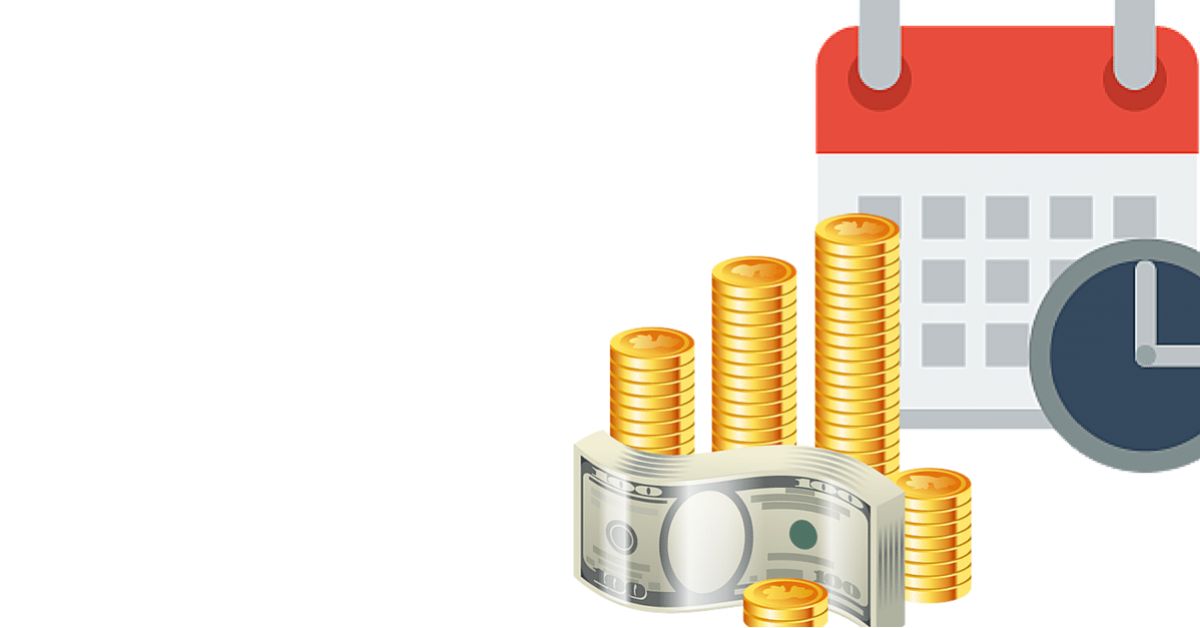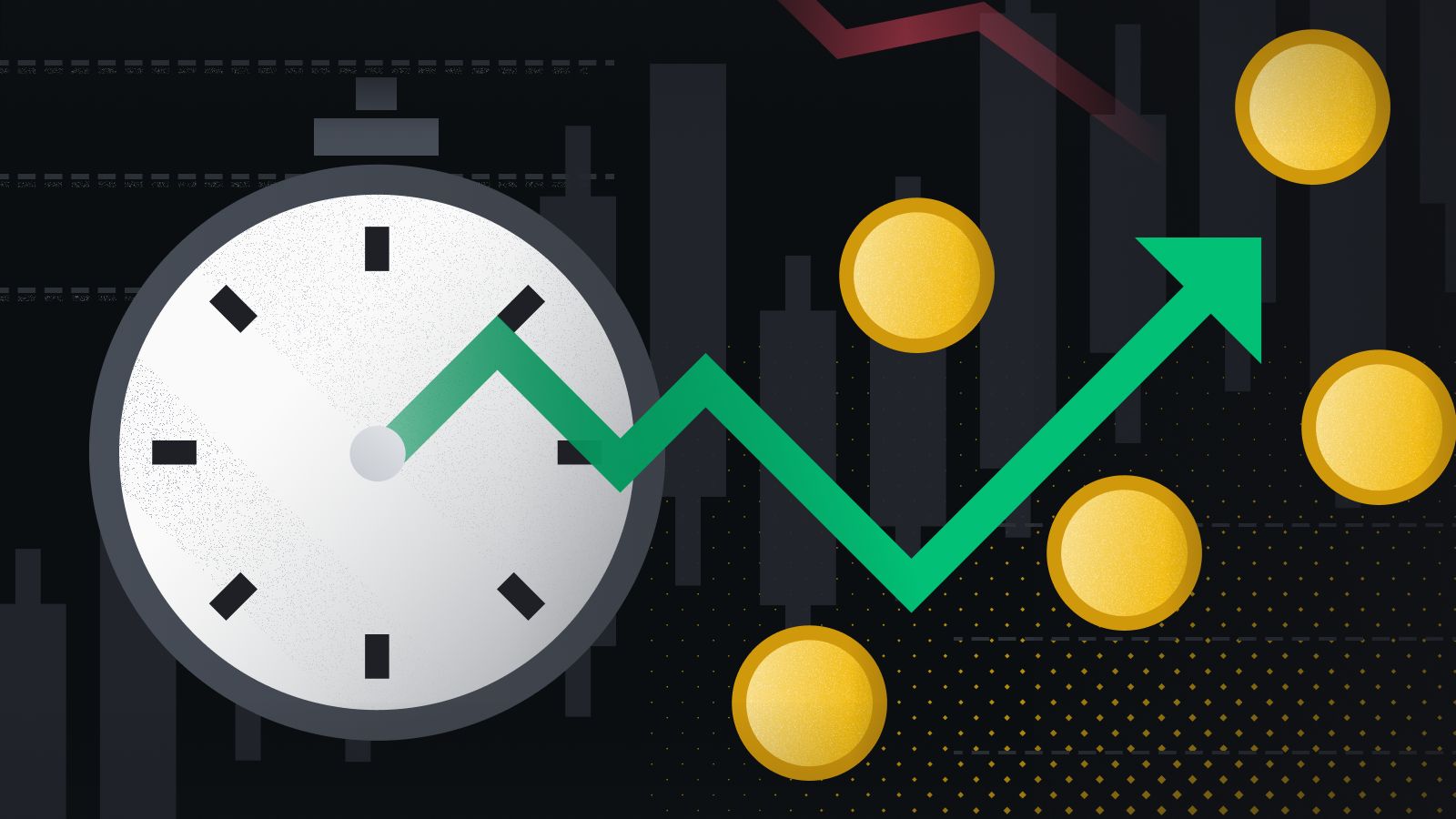Introduction
Day trading is a popular investment strategy that involves buying and selling financial instruments within the same trading day. It has gained immense popularity in recent years due to its potential for high returns. However, it is important to note that day trading can be challenging and carries significant risks. One of the crucial factors that can impact your day trading success is the amount of starting capital you have.
Many aspiring day traders wonder how much money they can make with a relatively small starting capital of $1000. While there is no one-size-fits-all answer to this question, this article will provide valuable insights to help you understand the potential earnings and factors that can affect them.
Day trading is not a get-rich-quick scheme. It requires a deep understanding of the financial markets, technical analysis, and disciplined decision-making. With a limited starting capital of $1000, the goals and strategies need to be tailored accordingly. It is essential to set realistic expectations and take calculated risks to maximize the potential returns while managing the inherent risks involved.
This article will explore various aspects of day trading with a $1000 starting capital, including setting goals, implementing effective trading strategies, managing risk, and growing your account over time. We will also delve into the factors that can impact your earnings, along with real-life case studies of day traders who have successfully navigated the challenges of trading with a small account.
The road to becoming a successful day trader with a $1000 starting capital is not without its obstacles. However, armed with knowledge, patience, and a strong work ethic, it is possible to achieve significant gains and gradually grow your account. Let’s embark on this journey together and unlock the potential of day trading with $1000.
Understanding Day Trading
Day trading is a trading strategy where traders buy and sell financial instruments, such as stocks, currencies, or commodities, within the same trading day. Unlike long-term investing, which focuses on holding assets for an extended period, day traders aim to profit from short-term price fluctuations.
One of the key characteristics of day trading is the use of technical analysis. Day traders analyze price charts, patterns, and market indicators to identify short-term trading opportunities. They rely on tools such as moving averages, trend lines, and oscillators to make informed trading decisions.
Day trading requires a high level of attention and focus, as trades are executed quickly, often within minutes or even seconds. Traders need to make rapid decisions based on market conditions and technical signals. It is a fast-paced and dynamic trading style that requires discipline, emotional control, and a solid understanding of risk management.
Furthermore, day traders often use leverage to magnify their potential returns. Leverage allows traders to control larger positions with a smaller amount of capital. While it can increase profits, it also amplifies losses, making risk management even more crucial.
Day trading is not suitable for everyone. It requires a significant time commitment, as traders need to closely monitor the markets and execute trades in real-time. It demands strong analytical skills, the ability to handle stress, and a willingness to continuously learn and adapt to changing market conditions.
It is important to note that day trading does come with risks. The volatile nature of the financial markets can result in substantial losses. It is crucial for day traders to implement effective risk management strategies, including setting stop-loss orders and adhering to proper position sizing rules.
Understanding the basics of day trading is essential before diving into the world of trading with a small starting capital. In the next section, we will explore the considerations involved when starting day trading with $1000 and how to set realistic goals for your trading endeavors.
The Starting Capital
When it comes to day trading, the starting capital plays a significant role in determining the potential earnings and overall success. Starting with a small capital of $1000 poses unique challenges and considerations that traders need to be aware of.
A smaller starting capital limits the number of trades and the size of positions a day trader can take. With limited capital, it is crucial to focus on higher-probability trades and carefully select trading opportunities. A conservative approach is often necessary to protect the account balance and gradually grow the capital.
While $1000 may seem like a small amount to start day trading, it is important to remember that the goal is to generate a percentage return on investment (ROI) rather than focusing on the absolute dollar amount. Day traders with larger accounts may aim to make hundreds or even thousands of dollars per day, but with a $1000 starting capital, the focus should be on percentage gains.
Setting realistic expectations is key. It is unrealistic to expect massive returns or quit your day job overnight with $1000. Successful day trading takes time, practice, and consistent profits over a sustained period. It is important to have patience and approach day trading as a long-term endeavor.
Another consideration with a small starting capital is the ability to absorb losses. Losses are an inevitable part of day trading, and it is essential to have enough capital to weather losing trades and maintain the ability to take advantage of future opportunities. Risk management becomes even more critical when working with a limited capital base.
While $1000 may be the starting point, it is crucial for day traders to continue building their account over time. Consistently adding funds to the trading account or reinvesting profits allows for increased trading opportunities and the potential for higher returns. The goal is to steadily grow the account balance and eventually have a larger capital base for day trading.
Overall, starting with a small capital of $1000 requires careful planning, risk management, and realistic expectations. It is important to focus on percentage gains, protect the account balance, and gradually grow the capital through consistent profits. In the next section, we will discuss how to set realistic goals when day trading with a limited starting capital.
Setting Realistic Goals
Setting realistic goals is crucial when day trading with a limited starting capital of $1000. It is essential to have a clear understanding of what you aim to achieve and to set achievable targets that align with your trading abilities and the market conditions.
First and foremost, it is important to define your financial goals. What do you hope to accomplish through day trading? Are you looking to generate a consistent side income, grow your capital for long-term investing, or eventually transition into full-time trading? Understanding your goals will help you determine the strategies and approach that best suit your needs.
Next, it is necessary to set specific and measurable objectives. Rather than focusing on arbitrary financial targets, consider setting goals related to your trading performance and risk management. For example, you could aim for a certain percentage return on your starting capital each month or focus on minimizing drawdowns and staying within a predefined risk tolerance.
It is important to keep your goals realistic and achievable. While it may be tempting to set ambitious targets, it is crucial to consider the limitations of a $1000 starting capital. Day trading with a small account requires a conservative approach and a focus on capital preservation. Therefore, setting more modest goals that are attainable within the constraints of your starting capital is more realistic and sustainable.
Moreover, it is important to continuously evaluate and readjust your goals as you gain experience and a better understanding of the markets. The financial markets are dynamic and ever-changing, and it is essential to adapt your trading goals and strategies accordingly. Regularly reviewing and adjusting your goals will help you stay on track and avoid unnecessary frustration.
Finally, it is important to remember that day trading is a journey, and achieving your goals takes time and practice. It is not uncommon for day traders to experience setbacks and losses along the way. Having a resilient mindset and focusing on long-term success is crucial. Celebrate small victories and learn from any setbacks, using them as valuable learning experiences to refine your strategies and improve your trading skills.
By setting realistic goals tailored to your starting capital and continuously reassessing your objectives, you will enhance your likelihood of success in day trading. In the next section, we will explore effective trading strategies that can be utilized with a small account, helping you maximize your potential returns.
Trading Strategies for Small Accounts
Trading with a small account requires a strategic approach to maximize potential returns while managing risk. Here are some effective trading strategies that can be utilized with a $1000 starting capital:
- Focus on high-probability trades: With limited capital, it is crucial to be selective in choosing trades that offer the highest potential for success. Look for setups with strong technical signals, clear trends, and favorable risk/reward ratios. Avoid taking unnecessary or low-probability trades that can erode your capital.
- Utilize leverage wisely: Leverage can amplify both gains and losses. While it can be tempting to take larger positions for potentially higher returns, it is crucial to exercise caution. Only use leverage when the risk is well-managed and within your risk tolerance. Proper risk management is essential to protect your account from significant drawdowns.
- Consider day trading in liquid markets: Trading in highly liquid markets, such as major currency pairs or heavily-traded stocks, increases the opportunities for execution and enables tighter spreads. This allows for more efficient trade entries and exits, which is crucial when working with a small account. Avoid markets with low liquidity, as they can result in slippage and difficulties in closing positions.
- Implement stop-loss orders: Setting stop-loss orders is vital for managing risk and protecting your capital. Determine your maximum loss tolerance per trade and set stop-loss levels accordingly. This ensures that if a trade goes against you, you exit the position before the loss becomes too significant.
- Consider utilizing short-term trading strategies: Short-term trading strategies, such as scalping or day trading, can be more suitable for smaller accounts. These strategies aim to profit from quick price movements within the same trading day. They require less capital commitment and can provide frequent trading opportunities to capitalize on small price fluctuations.
- Keep emotions in check: Emotions can greatly impact trading decisions and lead to impulsive actions. It is important to maintain a disciplined and systematic approach to trading, regardless of the account size. Stick to your trading plan, follow your predefined strategies, and avoid making emotional decisions based on fear or greed.
Remember, trading strategies should be tested and refined over time. It is important to adapt and modify your approach based on market conditions and your own experiences. Continuously learning and staying informed about market trends and developments is essential for success in day trading.
By implementing these trading strategies for small accounts, you can optimize your chances of generating consistent profits and growing your $1000 starting capital. In the next section, we will discuss the importance of effective risk management when day trading with a limited account.
Risk Management
Risk management is a vital aspect of day trading, especially when working with a small account. Proper risk management strategies are essential for protecting your capital and ensuring long-term success. Here are some key principles to consider when managing risk with a $1000 starting capital:
- Define your risk tolerance: It is important to determine your risk tolerance before entering any trades. Consider factors such as your financial situation, comfort level with potential losses, and overall investment goals. This will help you establish appropriate risk parameters for your trading activities.
- Use appropriate position sizing: Proper position sizing is crucial for managing risk. It involves determining the number of shares or lots to trade based on your account size and risk tolerance. With a small account, it is recommended to limit your risk per trade to a small percentage of your total account balance, typically between 1-2%. This ensures that any potential losses are kept within a manageable range.
- Set stop-loss orders: Setting stop-loss orders is a key risk management tool. It allows you to define the maximum amount you are willing to lose on a trade. When entering a trade, determine where your stop-loss level will be based on your analysis and risk tolerance. Placing a stop-loss order ensures that you exit the trade if it moves against you, preventing further losses.
- Diversify your trades: Diversification is a risk management strategy that involves spreading your trades across different markets, sectors, or asset classes. By diversifying your trades, you reduce the risk of being heavily exposed to a single trade or market. This helps mitigate the impact of potential losses and ensures that your account is not overly reliant on the performance of a particular trade or sector.
- Manage emotions: Emotions can cloud judgment and lead to irrational decision-making. It is important to keep emotions in check while trading and follow your predefined risk management plan. Stick to your stop-loss levels, avoid chasing losses, and resist the temptation to take excessive risks in the hope of making quick profits. Staying disciplined and objective is key to effective risk management.
By implementing these risk management practices, you can minimize potential losses and protect your $1000 starting capital. Remember that risk management should be an ongoing process. Continuously monitor and evaluate your risk exposure, adjust your position sizing as your account grows, and regularly assess your risk tolerance to ensure that your trading activities align with your goals and comfort level.
In the next section, we will discuss strategies and tips for growing your account over time as you gain experience and achieve consistent profits.
Growing Your Account
Growing your trading account over time is a common goal for day traders, regardless of their starting capital. With a $1000 account, it requires a disciplined and strategic approach to gradually increase your capital. Here are some strategies and tips to help you grow your account:
- Consistency is key: Consistency in your trading approach is crucial for long-term growth. Stick to your trading plan, strategies, and risk management rules. Avoid chasing after every trade or getting swayed by short-term gains. Focus on making consistent profits over time rather than trying to hit home runs with every trade.
- Reinvest your profits: Reinvesting your profits back into your trading account is an effective way to accelerate your account growth. Instead of withdrawing your earnings, consider reinvesting them to increase your trading capital. This allows you to take larger positions and potentially generate higher returns.
- Incremental growth: With a small starting capital, it is important to aim for incremental growth. Set realistic monthly or quarterly growth targets based on your trading strategy and risk tolerance. Gradually increasing your account balance over time will enable you to take on larger trades and improve your potential for profits.
- Continued learning and adaptation: The financial markets are dynamic and constantly evolving. To stay ahead and grow your account, it is crucial to continue learning, staying updated with market trends, and refining your trading strategies. Attend webinars, read books, follow market news, and analyze your trades to identify areas for improvement.
- Consider scaling in and out of trades: Scaling in and out of trades involves gradually building or reducing your position size as the trade moves in your favor or against you. This strategy allows you to take advantage of favorable price movements while managing risk. By scaling in and out, you can potentially enhance your returns and minimize losses.
- Expand your trading opportunities: As your account grows, consider diversifying your trading activities to include different markets, sectors, or asset classes. This can provide additional sources of potential profits and reduce reliance on a single market. However, ensure that you thoroughly understand the dynamics of each market before expanding your trading activities.
It is important to note that growing your account takes time and patience. It is not about making quick, risky bets, but rather about consistent and sustainable growth. By implementing these strategies and gradually building your account, you can increase your trading capital and potentially achieve your financial goals.
In the next section, we will explore the various factors that can affect your earnings when day trading with a $1000 starting capital.
Factors That Affect Earnings
When day trading with a $1000 starting capital, there are several factors that can significantly impact your earnings. Understanding these factors can help you make informed trading decisions and manage your expectations. Here are key factors to consider:
- Market volatility: The level of market volatility can greatly impact your earnings as a day trader. Higher volatility provides more trading opportunities and the potential for larger price movements, which can lead to higher profits. Conversely, lower volatility may result in fewer trading opportunities and smaller price fluctuations, affecting your potential earnings.
- Trading costs: Trading costs, including commissions, spreads, and fees, can eat into your profits. With a small account, keeping trading costs low becomes even more crucial. Compare different brokerage options and choose a platform that offers competitive rates, tight spreads, and low transaction fees to minimize the impact on your earnings.
- Trade execution: The speed and efficiency of trade execution can significantly impact your earnings, especially when working with a small account. Slippage and delays in trade execution can result in missed opportunities or unfavorable trade prices. Ensure that you have a reliable trading platform with fast execution to maximize your earnings potential.
- Trading skills: Your trading skills and experience play a significant role in your earnings as a day trader. Developing a solid understanding of technical analysis, chart patterns, and market indicators can improve your ability to identify profitable trading opportunities. Continuously work on improving your trading skills through practice, education, and learning from past trades.
- Psychological factors: Emotions and psychological factors can influence your earnings as a day trader. Fear, greed, and overconfidence can lead to impulsive and irrational trading decisions. Developing emotional control, discipline, and mental resilience are crucial for consistent profitability. Consider utilizing techniques such as meditation, journaling, or seeking professional help to manage psychological factors.
- Market conditions: The overall market conditions and trends can impact your earnings. Bullish markets tend to offer more trading opportunities and potential for profits, while bearish or sideways markets can present challenges. Stay informed about market trends, economic indicators, and news events that can affect the overall market sentiment.
- External factors: External factors such as geopolitical events, economic news, and regulatory changes can have a significant impact on the financial markets. Stay updated with relevant news and events that can affect the assets you trade. Consider adjusting your trading strategy and risk management approach in response to changing external factors.
It is important to note that these factors can interact with each other and vary from one trader to another. Your ability to adapt, manage risks, and make informed trading decisions will ultimately determine your earnings as a day trader. Continuously monitor and assess these factors to optimize your trading approach and achieve your desired financial results.
In the next section, we will explore real-life case studies of day traders who have successfully navigated the challenges of trading with a small account.
Case Studies
Examining real-life case studies can provide valuable insights into the possibilities and challenges of day trading with a $1000 starting capital. Let’s explore a couple of scenarios to gain a better understanding:
Case Study 1: Sarah
Sarah started day trading with a $1000 account and focused on trading Forex currency pairs. She employed a disciplined and conservative approach, strictly adhering to risk management rules. Sarah set a maximum risk per trade at 1% of her account balance and utilized tight stop-loss orders.
Over the course of six months, Sarah diligently executed her trading strategies and gradually grew her account. She aimed for consistent monthly returns of 5-7% and avoided taking excessive risks. Through proper risk management and effective trade selection, Sarah was able to increase her account balance to $1500, representing a 50% growth.
Case Study 2: James
James started day trading with a $1000 account, primarily focusing on trading stocks. He employed a more aggressive trading strategy, aiming for high-profit trades with a higher risk tolerance. James utilized leverage to increase his position sizes and targeted larger price movements.
Although James experienced some initial success, he encountered challenges due to suboptimal risk management and emotional decision-making. His account balance fluctuated, and he incurred significant losses on a few trades. Despite the setbacks, James re-evaluated his approach, refined his risk management strategy, and sought guidance from experienced traders.
Over time, James improved his risk management skills and gained a better understanding of the importance of emotional control. This enabled him to gradually recover his losses and grow his account. After a year of learning, adapting, and staying disciplined, James was able to increase his account balance to $3500, representing a 250% growth.
These case studies showcase the possibilities and challenges of day trading with a $1000 starting capital. While Sarah achieved consistent growth through a conservative approach, James initially faced difficulties but eventually turned his account around through continuous improvement.
It is important to note that these case studies are hypothetical examples, and individual results may vary. Day trading success depends on various factors, including market conditions, trading skills, risk management, and emotional control. These examples serve as inspirations, demonstrating that with the right mindset, strategies, and continuous learning, it is possible to grow a small account over time.
In the next section, we will discuss how to overcome challenges and persevere on your day trading journey.
Overcoming Challenges
Day trading with a $1000 starting capital comes with its fair share of challenges. It is important to recognize these challenges and develop strategies to overcome them. Here are some common hurdles that traders may face and tips to navigate them:
Capital limitations: Starting with a small account means limited funds available for trading. This can restrict the number of trades you can take or the size of positions you can enter. To overcome this challenge, focus on high-probability trades and effective risk management. Prioritize quality over quantity and be patient in waiting for the best trading opportunities.
Emotional control: Emotions can be a significant hurdle in day trading. Fear, greed, and impulsive decision-making can lead to costly mistakes. To overcome this challenge, develop a trading plan and stick to it. Implement strict risk management rules and use stop-loss orders to limit potential losses. Practice self-discipline and work on maintaining emotional control, even in high-pressure situations.
Market volatility and unpredictability: The financial markets can be volatile and unpredictable, posing challenges for day traders. To navigate this, focus on adapting your strategies to prevailing market conditions. Be prepared to adjust your trading approach, consider alternative markets or asset classes, and continuously monitor market trends and news to capitalize on opportunities and manage risk.
Continuous learning: The world of day trading is dynamic, and there is a never-ending learning curve. To overcome this challenge, commit to continuous learning and improvement. Invest time in researching and studying different trading techniques, market analysis methods, and risk management concepts. Attend webinars, read books, and follow experienced traders to gain valuable insights and refine your skills.
Account growth: Growing a small account requires patience and perseverance. It can be discouraging when growth is slow or setbacks occur. To overcome this challenge, track your progress and focus on the percentage returns rather than the absolute dollar amounts. Celebrate small victories and view each setback as an opportunity to learn and improve. Stay motivated and maintain a long-term perspective, knowing that consistent growth takes time and dedication.
Support and guidance: Day trading can be a solitary endeavor, and lack of support or guidance can be challenging. To overcome this, seek out a community of like-minded traders, join online forums or trading groups, and connect with experienced traders who can offer advice and support. Engaging with a supportive community can provide valuable insights, accountability, and encouragement on your trading journey.
Remember, challenges are an inherent part of day trading, but with determination and the right mindset, they can be overcome. Stay resilient, remain adaptable to changing market conditions, and continually work on improving your trading skills and strategies. By overcoming these challenges, you can enhance your prospects for success in day trading.
In the final section, we will wrap up the key points discussed throughout this article.
Conclusion
Day trading with a $1000 starting capital presents unique opportunities and challenges. While it may seem daunting, with the right strategies and mindset, it is possible to achieve growth and profitability. Understanding the key factors that affect earnings, implementing effective risk management techniques, and staying disciplined are crucial for success.
Setting realistic goals and aligning them with your starting capital is essential. Remember that day trading is a journey, and consistent profits take time. Focus on gradual growth, prioritize risk management, and continuously adapt your strategies to changing market conditions.
By utilizing trading strategies suitable for small accounts, such as focusing on high-probability trades, utilizing leverage wisely, and diversifying your trades, you can maximize your potential returns. It is equally important to manage your emotions, stay disciplined, and continuously learn and refine your skills.
While challenges will arise, it is important to remain resilient. Overcome obstacles such as capital limitations, emotional control, market volatility, and continuous learning through perseverance and self-improvement. Seek support from experienced traders and build a community to enhance your journey.
Understanding these key factors and embracing these strategies can help you navigate the complexities of day trading with a $1000 starting capital. Remember that individual experiences may vary, and success relies on a combination of skill, knowledge, and discipline.
So, take the knowledge gained from this article, implement the strategies outlined, and embark on your day trading journey. Be patient, stay dedicated, and strive for consistent growth. With time, practice, and a commitment to continuous improvement, you can unlock the potential of day trading with $1000.

























